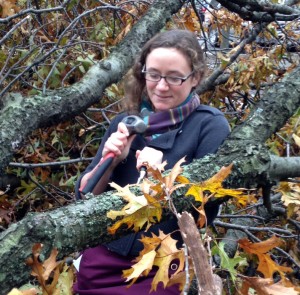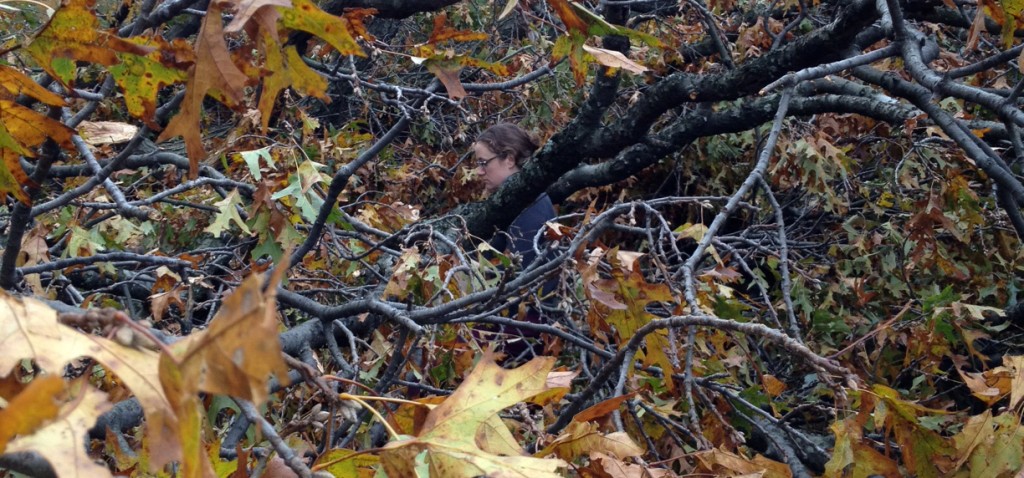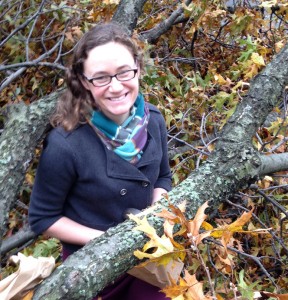Bringing Lichens Down to Earth
Posted in Science on December 13 2012, by Jessi Allen
As a student studying lichens at the NYBG, Jessi Allen offers a unique perspective on these fascinating organisms–symbiotic combinations of fungus and algae. She first joined the NYBG as an Herbarium intern in the summer of 2011, and began her graduate studies this fall.

During Hurricane Sandy, many trees fell throughout the Garden. At least a few of those caused damage to buildings or left gaps in the landscape. However, the silver lining of this cloud came in the form of giving NYBG botanists a chance to collect data that we usually don’t have access to.
Of the trees that fell, one of them was a big oak near the Pfizer Lab that, luckily, landed in the parking lot. The day immediately following the storm, I was working in the lab and saw Mike Nee, one of our curators, climbing through the tangled branches taking cores from this tree, and I thought, “That looks like fun!” According to Mike, the tree was about 90 feet tall and close to 100 years old. Rarely are we able to collect lichens from the tops of such large trees, so I went and grabbed a hammer and chisel, common tools for collecting specimens.

After climbing through the tree, looking for every different lichen I could find, I ended up with five different species. All of the species that I collected from the tree are common in the northeast, such as Physcia stellaris and Punctelia rudecta. Although they are not rare, each species is still an important physical collection, because it will be kept in the Herbarium at the NYBG–one of the largest in the world–to represent a small snapshot of lichen diversity and health in the Garden at this point in time.
 Having collections from a specific location over many points in time allows us to document how an environment changes over the years. These specific collections are especially exciting because lichens are sensitive to air pollution. According to Dick Harris, an NYBG lichenologist with decades of experience, there was hardly a lichen to be seen in NYC through the 1970s and 1980s. However, with increased regulations placed on air pollution, lichens have returned and can be seen in green spaces around the city.
Having collections from a specific location over many points in time allows us to document how an environment changes over the years. These specific collections are especially exciting because lichens are sensitive to air pollution. According to Dick Harris, an NYBG lichenologist with decades of experience, there was hardly a lichen to be seen in NYC through the 1970s and 1980s. However, with increased regulations placed on air pollution, lichens have returned and can be seen in green spaces around the city.
These lichens are not yet super diverse or abundant here in the city, but it is encouraging for us to see them at all, as they are visible proof that wise environmental choices do make a difference.

